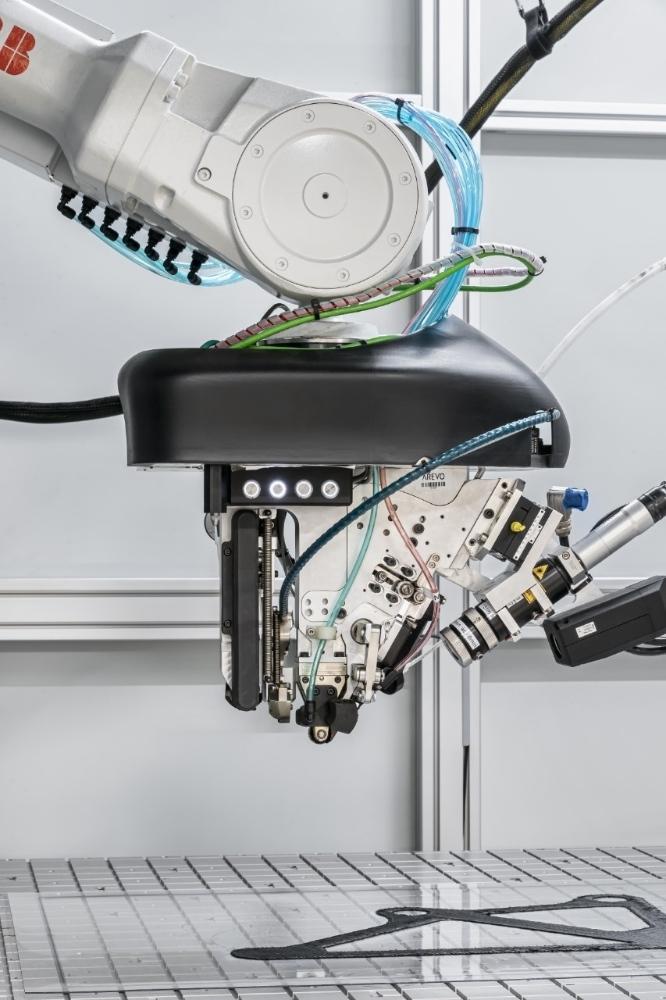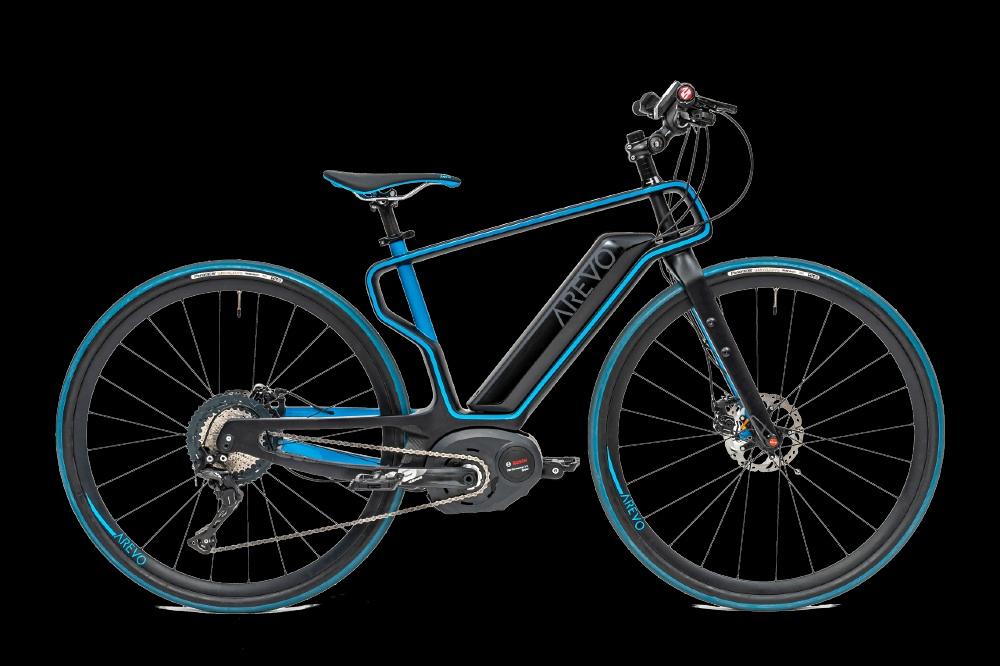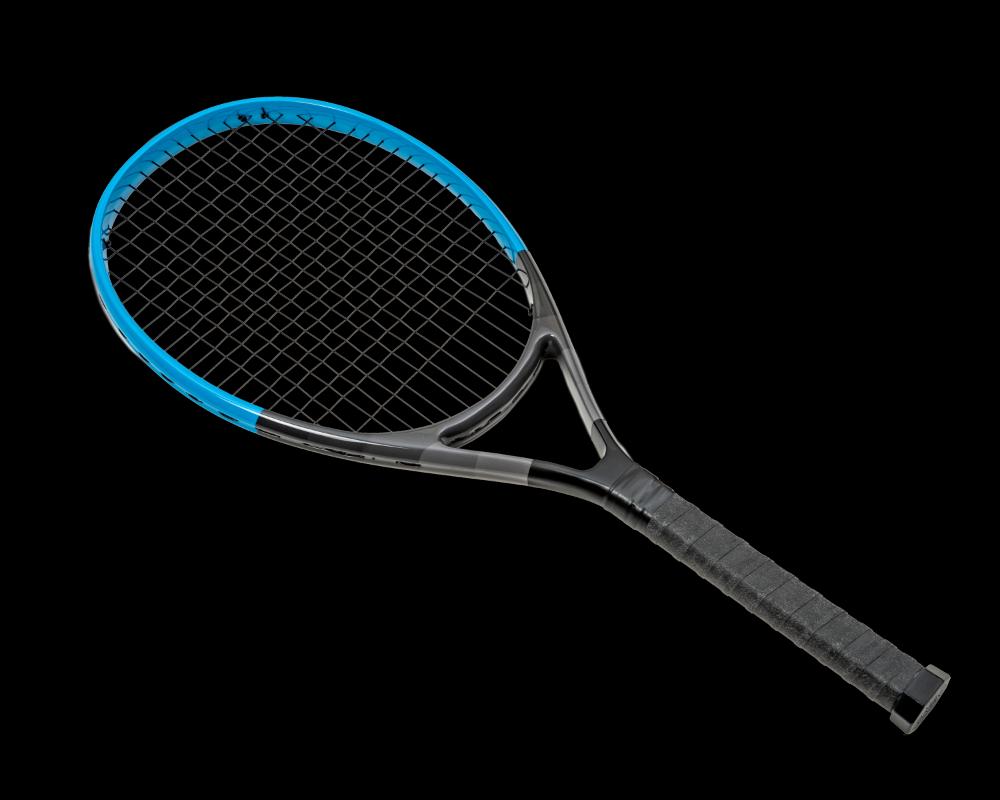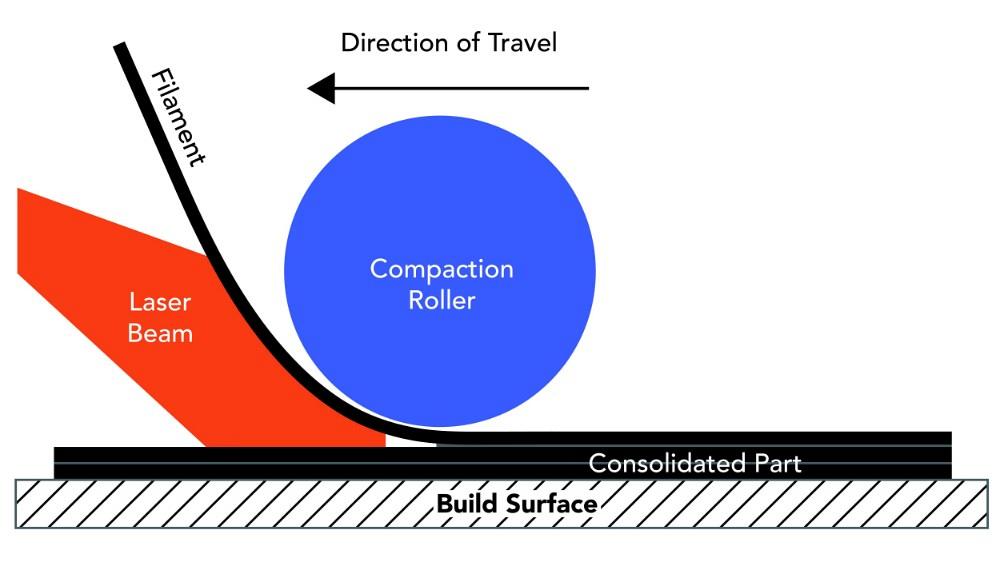- FMA
- The Fabricator
- FABTECH
- Canadian Metalworking
Our Publications
Categories
- Additive Manufacturing
- Aluminum Welding
- Arc Welding
- Assembly and Joining
- Automation and Robotics
- Bending and Forming
- Consumables
- Cutting and Weld Prep
- Electric Vehicles
- En Español
- Finishing
- Hydroforming
- Laser Cutting
- Laser Welding
- Machining
- Manufacturing Software
- Materials Handling
- Metals/Materials
- Oxyfuel Cutting
- Plasma Cutting
- Power Tools
- Punching and Other Holemaking
- Roll Forming
- Safety
- Sawing
- Shearing
- Shop Management
- Testing and Measuring
- Tube and Pipe Fabrication
- Tube and Pipe Production
- Waterjet Cutting
Industry Directory
Webcasts
Podcasts
FAB 40
Advertise
Subscribe
Account Login
Search
Arevo’s new design-print-go additive manufacturing system speeds parts-building
New AM system combines breakthrough composite materials, design/build software, and free-motion robotics
- By Holly B. Martin
- February 4, 2020
- Article
- Additive Manufacturing

Arevo’s additive manufacturing system combines a patented software algorithm, carbon-fiber materials, and robotic 3D printing technology. All images: Arevo
Carbon-fiber composites’ light weight and high strength-to-weight ratios make them ideal substitutes for certain metal parts and assemblies because they reduce material costs and increase mechanical performance.
“Composites have been around for 25 years or more, but they (have) extremely low market penetration,” said Arevo’s co-founder and chairman, Hemant Bheda. “We believe that is because they are an expensive proposition requiring hand labor and multiple steps, as well as taking a long time to take to market—typically 12 to 18 months.”
Even with the most current automated-fiber-placement (AFP) technology, composite manufacturing requires precision CNC machining of metal molds, vacuum bagging, and oven curing. The process won’t work for complicated designs, so several pieces must be built separately and hand-glued together, introducing possible human error.
Plus, large parts such as airplane wings must stay in the oven for a long time, consuming a lot of energy, Bheda said. “Now, with the confluence of innovations in different fields, especially computing power and robotics-based automation, we believe it’s time for a transformation.”
Arevo, Milpitas, Calif., seeks to use its patented software algorithm, carbon-fiber materials, and robotic 3D printing technology to enable manufacturing-as-a-service for the production of composite parts.
According to Bheda, “Our system completely eliminates the hand labor and oven curing steps, and with our software and fully automated robotic 3D printer enclosure, we can realize these products almost instantaneously.”
Continuous Fibers
Carbon-fiber composites are made up of thin, very strong crystalline filaments of carbon that are coated in a polymer matrix, explained Arevo Cofounder and CTO Wiener Mondesir. The matrix holds the fibers together so they can be formed into permanent shapes to create strong structures.
“On top of being strong, carbon-fiber composites are high in stiffness and tensile strength, lightweight, and have high chemical resistance and temperature tolerance,” said Mondesir.
Other composite 3D printing systems can build parts from filaments comprised of chopped fibers a few microns long embedded in a thermoset plastic filament. The size of they can make is limited, whereas Arevo’s system can print larger objects—up to 1 cubic meter.
The Arevo system uses filaments made from a PEEK matrix that’s embedded with aerospace-grade, continuous-carbon fiber.
“PEEK is a common plastic material that is recyclable and (provides) better mechanical performance than thermoset,” said Bheda, adding that Arevo’s feedstock is 1.2 millimeter in diameter and contains 12,000 parallel strands of continuous-carbon fibers, each of which are 5 to 6 microns in diameter.
“Using a continuous fiber gives us an order of magnitude performance gain over chopped fiber—along the direction of the fiber. The feedstock has five times the strength of titanium at one-third the weight,” said Bheda.
Design, Print, Go
In addition to selling the parts that it makes, Arevo also supplies 3D printers to other companies. It recently announced the sale of its first system to be installed in Japan, at Tokyo-based AGC Inc., and by the end of Q1 2020 expects to have at least four sites around the world manufacturing parts on demand. The company plans to have 10 sites worldwide by year’s end.
“With our software in the cloud, thousands of designers can now access it to create parts that have never before been possible,” Bheda said. “And with a worldwide network of printers, they can have their designs printed on demand, because the big promise of 3D printing is making a part where and when you need it.”
The software offers an end-to-end solution for making composites, said Mondesir. “You start out with a 3D model, and our software does the analysis and generates an optimal geometric arrangement for the fibers.”
Continuous-carbon-fiber composites typically exhibit anisotropy, which means some properties vary depending on the geometric plane/axis they are measured along, Mondesir said. “That’s why it is very important to be able to control the geometric arrangement of the fibers with respect to the loads the part will experience.”
The software also can assist in the design process by removing material and recommending the most efficient design to meet the real-world operating conditions the part will likely encounter, Mondesir added. “After that, it calculates the amount of composite material required and produces instructions to fabricate the part using Arevo’s 3D printing technology.”
The system also collects data on the part as it’s being manufactured, creating a digital twin—an exact representation of the part as-printed. This data can be used for quality-assurance purposes and proves useful for detecting and analyzing problems as they occur.

During printing, the multiaxis, automated robotic arm and platform move freely, providing more than three axes for depositing material. Standard AM technologies involve stacking 2D layers of material to build a 3D object.
Laser DED
In addition to breakthroughs in software and materials, Arevo has developed a patented 3D printing process based on laser DED, or direct energy deposition.
“Our DED process uses a laser source to melt the polymer filament, while also melting the previously deposited material to create a liquid-to-liquid interface—what we call in-situ consolidation,” Bheda said. “At the same time, it applies a compression force, which reduces the void content to less than 1% and practically eliminates layers such that a cross-section looks completely homogeneous.”
The result is a composite 3D printing process that is qualified for use on primary aerospace structures, he said.
During printing, the multiaxis, automated robotic arm and platform move freely, giving the printer more than three axes to deposit material. That is important for ensuring that the fibers follow the plane of the part surface to gain the best possible mechanical performance from the carbon-fiber composite.
“When we put that together with all the other benefits of our system—eliminating the hand labor and oven curing, automating the QA, and making complex single parts that don’t require assembly—you’re talking about making parts at one-third the cost while simplifying the process and shortening design cycles,” Bheda said. “We are growing the market penetration for composites and enabling manufacturing as a service.”
Arevo Teams With Bicycle Company to 3D-print Two-wheelers
Arevo is working on a new line of electric bicycles with boutique bike manufacturer Franco Bicycles. Called the Emery One, it’s reportedly the world’s first 3D-printed, carbon-fiber electric bike.
Traditional composite bike frames require 18 months to design and get into production. Arevo said its 3D-printing technology could shrink the timetable to a few weeks.
According to Arevo’s Hemant Bheda, frame makers today build up to 20 design iterations using trial and error. When they settle on a design, they hand-build a prototype, ride it, and then change the design. Repeat. Then they arrange factory time to have the bikes built—typically in China.
Factory-built composite frames are made by hand from 27 to 30 different parts, which are glued together. “Contrast that with Arevo’s system, in which all the design work, including analysis and optimization, is done with software,” Bheda said. “This makes for a low upfront investment and creates a unibody design—a single part with intelligent continuous-fiber placement all along the periphery of the bike that provides unprecedented structural integrity and stability.”

Emery One, the world’s first 3D-printed, carbon-fiber electric bike, is being built on an Arevo system. (See sidebar.)
“Today, out of the 2 million composite bicycle frames made, 99% are made in China,” said Bheda. “We believe that as the technology improves, the cost structure will shift so that in three years it will no longer make sense to make bicycle frames by hand in China.”
Arevo is working on several other applications as well, including wheels for bicycles and scooters. Makers of commercial drones for transporting packages are interested in composites for their light weight, as are makers of sports equipment, including tennis rackets and ice skates (for the structure connecting the metal blade and boot).
Other strategic applications are under development as well, in the aerospace, construction, and automotive sectors
About the Author

Holly B. Martin
About the Publication
- Podcasting
- Podcast:
- The Fabricator Podcast
- Published:
- 04/16/2024
- Running Time:
- 63:29
In this episode of The Fabricator Podcast, Caleb Chamberlain, co-founder and CEO of OSH Cut, discusses his company’s...
- Trending Articles
- Industry Events
16th Annual Safety Conference
- April 30 - May 1, 2024
- Elgin,
Pipe and Tube Conference
- May 21 - 22, 2024
- Omaha, NE
World-Class Roll Forming Workshop
- June 5 - 6, 2024
- Louisville, KY
Advanced Laser Application Workshop
- June 25 - 27, 2024
- Novi, MI




























